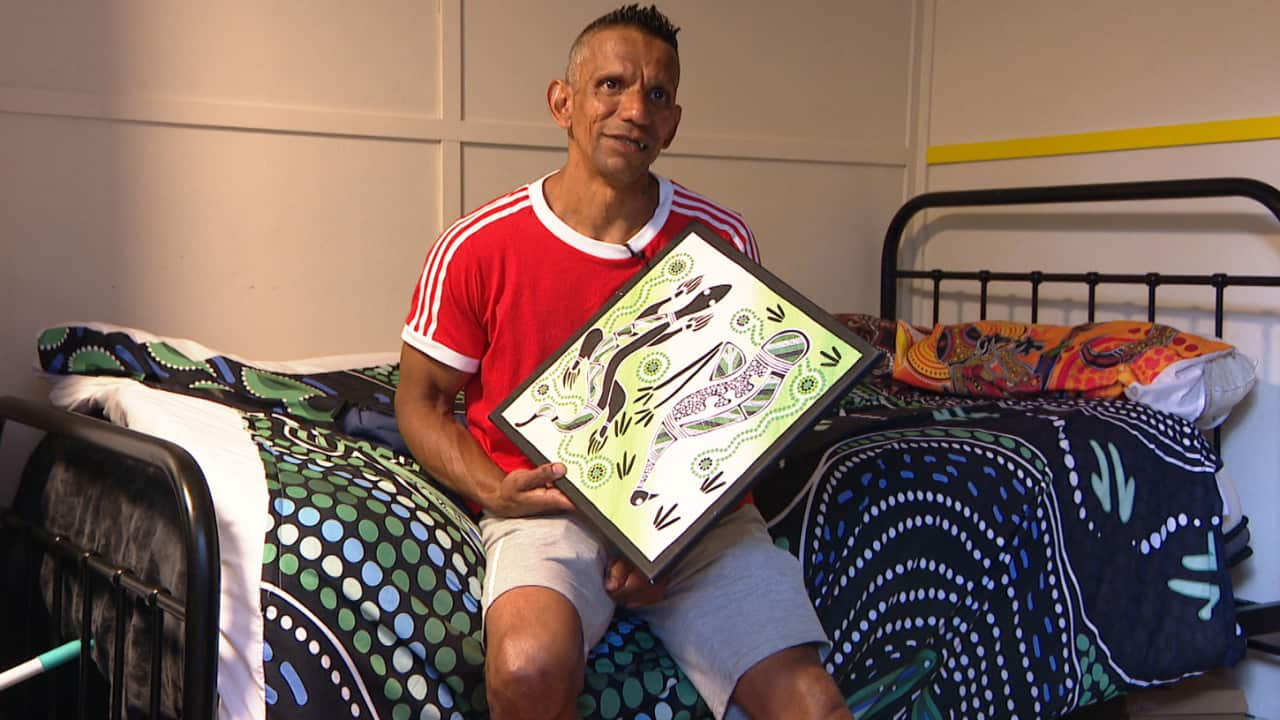Michael Pitt, a 44 year-old Gomeroi Gamilaroi man, was first placed in detention when he was 14 years old.
Since then, he has served 30 years on and off behind bars.
“Growing up, not once was I told I could be someone.
“I’ve always been told by people, whether it’s in the community or by the criminal justice system, ‘You’re nothing but a criminal, nothing but a no-hoper,'” he told NITV.
“The criminal justice system, it’s not a good place for anyone,” he said.
“You don’t get rehabilitated, you just get worse.”
New South Wales custody data shows the state’s incarceration figures are also getting worse.
The latest quarterly custody report from the NSW Bureau of Crime Statistics and Research found Indigenous adults make up 31 per cent of its prison population, despite only representing 3.2 per cent of the state’s residents.
The statistics show 1 in every 29 Aboriginal men is incarcerated.
State statistics show the disproportionate number of Aboriginal people in the justice system.
This over-representation is stark for young people, too.
Two-thirds, or 66.4 per cent of the youth detention population is Indigenous.
The figures show NSW is no longer on track to meet its Closing the Gap targets to reduce the number of Indigenous adults held in prison by at least 15 per cent, and the number of Indigenous young people in detention by at least 30 per cent.
“The mass incarceration of Aboriginal children and adults in New South Wales was already at crisis point … and it’s only getting worse,” said Lauren Stephanou, Managing Solicitor of NSW Justice Projects at the Aboriginal Legal Service.
For Ms Stephanou, the recent numbers are a blatant indication the government’s approach to crime is not working.
“The crisis of over imprisonment is the result of government policies which prioritise policing and prisons over strong and safe communities,” she said.
Rainbow Lodge is a residential support program which helps men transition back into the community following a period of incarceration
Staff at the Lodge see first-hand the damaging impacts high incarceration figures are having on Indigenous communities.
“You think about the breakup of families – someone’s son, someone’s uncle, someone’s cousin, brother, grandson … This is why our communities are so broken,” said Raymond Weatherall, a Cultural Support Officer at the Lodge.
The program takes a restorative approach, focusing on helping ex-prisoners heal from trauma and break cycles of crime and incarceration.
Claude Robinson is the Manager of Rainbow Lodge, and says “When we incarcerate First Nations people at 31 per cent of the prison population, how can you expect to have anything but communities that are destroyed?”
“We know what works …we just need the political will of the government to actually fund it and do it,” Robinson said.
In response to the latest incarceration figures, NSW Attorney General Michael Daley said the government is concerned about the overrepresentation of First Nations people in custody.
“We are working closely and collaboratively with Aboriginal communities to address the causes contributing to the disproportionate number of Aboriginal people in the criminal justice system,” Mr Daley said in a statement.

